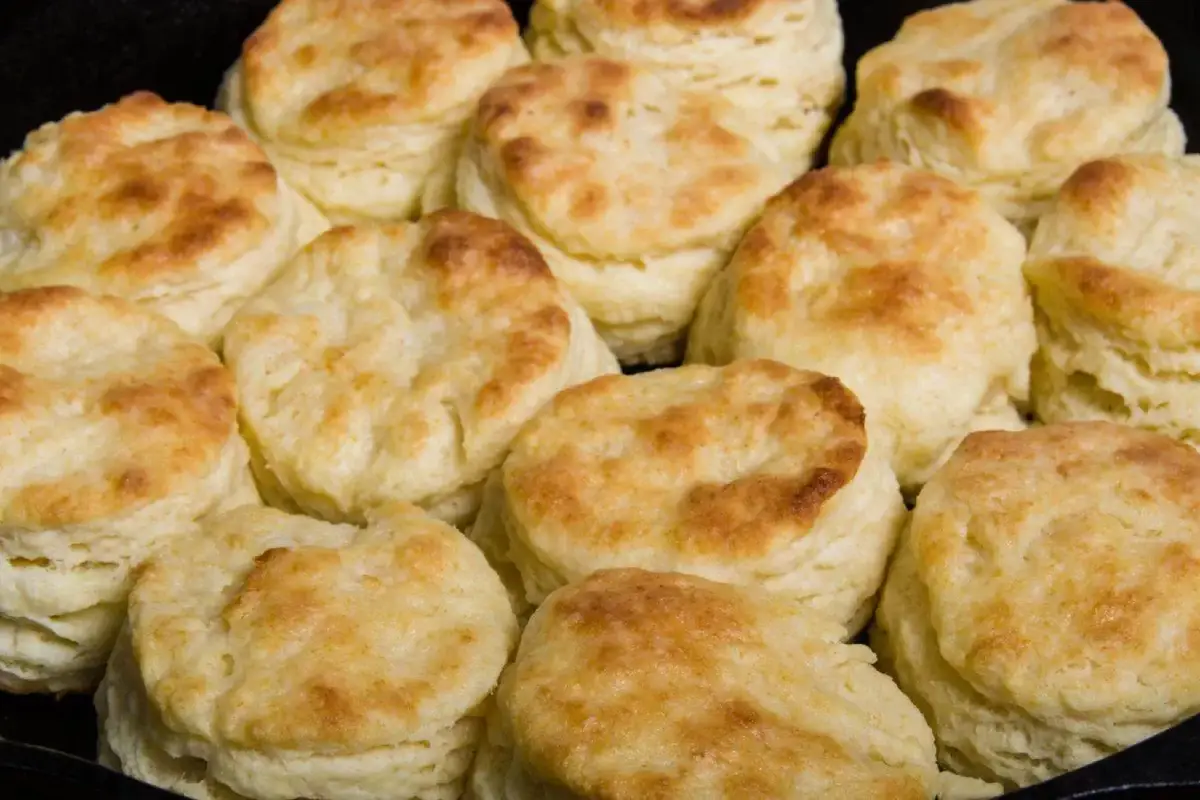Welcome, fellow food enthusiasts, to a culinary journey where tradition meets the comfort of your kitchen. Today, I’m thrilled to share with you a recipe that holds a special place in my heart and kitchen: the White Lily Biscuit Recipe. This isn’t just any biscuit recipe; it’s a gateway to creating memories, filled with the aroma of buttery, flaky goodness that promises to bring a smile to your face.
Who This Recipe is For?
Whether you’re a seasoned baker or someone who’s just starting to explore the wonders of homemade bread, this recipe is for you. It’s designed for those who appreciate the value of a warm, freshly baked biscuit but might be intimidated by the thought of baking from scratch. Fear not, for this guide is here to make the process as simple and enjoyable as possible.
Why the White Lily Biscuit Recipe is Great?
The White Lily Biscuit stands out for its light, airy texture, and rich flavor, a testament to the power of simple ingredients coming together in perfect harmony. What makes this recipe exceptional is its versatility; these biscuits can be the star of a hearty breakfast, a delicate side for your dinner, or the base for a decadent dessert.
Ingredients:
- 2 cups White Lily® Self-Rising Flour
- 1/4 cup cold butter or shortening
- 2/3 to 3/4 cup buttermilk or milk
Instructions:
- Preheat the Oven: Preheat your oven to 450°F (232°C). This high temperature is crucial for getting that nice rise and golden top on your biscuits.
- Mix Dry Ingredients: In a large bowl, sift 2 cups of White Lily® Self-Rising Flour. Sifting is not mandatory, but it helps aerate the flour, making the biscuits lighter.
- Cut in Butter: Using a pastry blender or your fingertips, cut in 1/4 cup of cold butter (or shortening) into the flour until the mixture resembles coarse crumbs. The butter should be very cold to ensure flakiness in the biscuits.
- Add Milk: Gradually add 2/3 to 3/4 cup of buttermilk or milk, stirring until the dough pulls away from the sides of the bowl. If the dough is too dry, add a little more milk until it reaches a sticky consistency.
- Knead Gently: Turn the dough out onto a lightly floured surface and knead gently 2 to 3 times. Over-kneading will result in tough biscuits.
- Roll and Cut: Roll the dough to about 1/2 inch thickness. Use a biscuit cutter or a glass with a sharp edge to cut out biscuits. Do not twist the cutter; push straight down and lift straight up for the best rise.
- Bake: Place the biscuits on a baking sheet, preferably lined with parchment paper, with edges touching for soft sides or spaced apart for crisp sides. Bake for 10 to 12 minutes or until golden brown.
- Serve Warm: Remove the biscuits from the oven and brush the tops with melted butter for extra flavor and a soft crust. Serve warm.
Estimated Nutrition Information (per biscuit, yields 12 biscuits):
- Calories: 150-170 kcal
- Fat: 6-8 g (Saturated Fat: 3-5 g, depends on the type of butter or shortening used)
- Carbohydrates: 20-22 g
- Fiber: 0.5-1 g
- Sugar: 1-2 g (naturally occurring in milk; this does not account for added jams or toppings)
- Protein: 3-4 g
- Sodium: 380-450 mg (primarily from the self-rising flour and butter)
Recipe Tips and Tricks
- Keeping the butter cold is crucial for achieving those desirable flaky layers.
- Don’t overwork the dough; a light touch is key to soft biscuits.
- For an extra golden top, brush the biscuits with melted butter before baking.
Recipe Swaps and Variations
- Dairy-Free? Use plant-based milk and butter.
- Add cheese or herbs for a savory twist.
- For a sweet version, incorporate a little sugar and cinnamon into the dough.
Storing Leftovers
Biscuits are best enjoyed fresh, but if you find yourself with leftovers, store them in an airtight container at room temperature for up to two days or freeze for longer storage.
Food and Drink Pairings
Pair these biscuits with a robust coffee for breakfast, a hearty stew for dinner, or a sweet jam for a delightful snack. The possibilities are endless, and the choice is yours to make.
FAQ
Q: Can I use all-purpose flour instead of White Lily® Self-Rising Flour?
A: Yes, you can substitute all-purpose flour, but you’ll need to add leavening agents to make it equivalent to self-rising flour. For each cup of all-purpose flour, add 1 1/2 teaspoons of baking powder and 1/4 teaspoon of salt. Mix well before using.
Q: How do I get my biscuits to rise higher?
A: Ensure your baking powder is fresh, as it loses its potency over time. Also, avoid overworking the dough; gentle handling is key. Placing the biscuits close together on the baking sheet helps them rise higher by supporting each other during baking.
Q: Can I make the biscuit dough ahead of time?
A: Yes, you can prepare the dough, cut the biscuits, and then refrigerate them on a baking sheet covered with plastic wrap for a few hours before baking. For longer storage, freeze them on a baking sheet and transfer to a freezer bag once solid. You can bake them straight from the freezer, adding a few extra minutes to the baking time.
Q: Why are my biscuits tough?
The most common reason for tough biscuits is overworking the dough. Handle the dough as little as possible once you’ve added the liquid. Also, ensure your butter or shortening is cold to produce flaky layers. Overworking the dough can lead to tough, dense biscuits because it breaks down the butter into smaller pieces, shrinking the air pockets that create a light, fluffy texture. Over-handling also over-develops the gluten protein in the flour, yielding a tough and chewy bite. For more insights on avoiding tough biscuits, Allrecipes offers valuable tips.
Q: Can I use milk substitutes, like almond or soy milk?
Yes, you can use non-dairy milk substitutes in biscuit recipes. The results may vary slightly in flavor and texture, but they should still be delicious. Non-dairy milks like almond or soy can be used as a substitute for traditional milk in most baking recipes without significantly altering the taste or texture of your biscuits. This flexibility allows those with dairy intolerances or preferences to still enjoy homemade biscuits.
Q: How can I make my biscuits more flavorful?
For richer flavor, you can add cheese, herbs, or spices to the dough. Brushing the tops with melted butter before and after baking adds flavor and gives a beautiful golden color. Adding ingredients such as cheese or herbs not only enhances the flavor but also adds a unique twist to traditional biscuit recipes, making them more versatile and suitable for various occasions and preferences.
Conclusion
The White Lily Biscuit Recipe is more than just a set of instructions; it’s a canvas for your culinary creativity and a chance to bring warmth and joy to your table. Whether you’re a baking novice or a seasoned pro, these biscuits are sure to impress and delight.
LOOKING FOR MORE?
Explore more delicious recipes:

